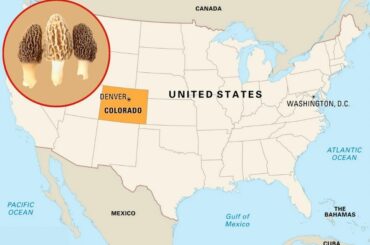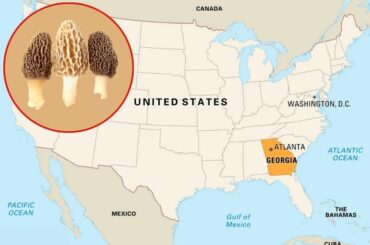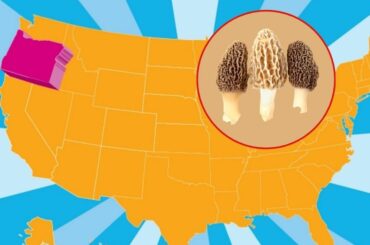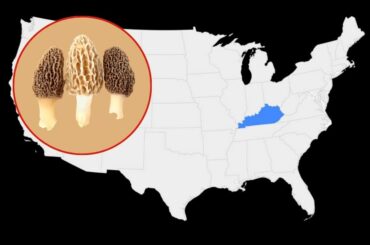But what is mycelium piss? Mycelium piss is the product that exudates from the mycelium when contamination is present. Is mycelium piss bad? Do we have to worry about this mycelium pee? Let’s further discuss this topic in this article.
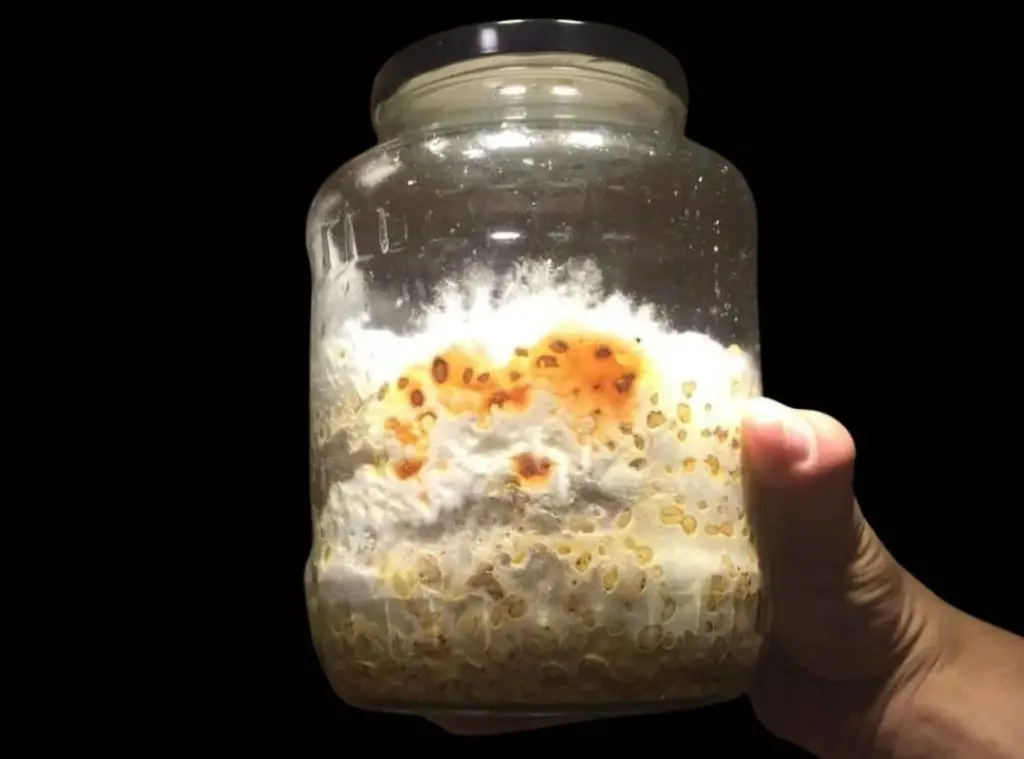
What is mycelium?
Contents
- 1 What is mycelium?
- 2 What does mycelium smell like?
- 3 How long does it take for the mycelium to fully colonize?
- 4 Mycelium examples
- 5 What is mycelium piss?
- 6 Is mycelium pee bad?
- 7 Can mycelium be yellow?
- 8 Orange spots on mycelium
- 9 How do I know if mycelium is contaminated?
- 10 How can I speed up mycelium growth?
- 11 What is a monotub?
- 12 Mycelium metabolites monotub
- 13 How can mycelium save the world?
- 14 Related questions
- 15 Can mycelium be toxic?
- 16 Conclusion
Mycelium is the vegetative fragment of a fungus. It is composed of a mass of branching, thread-like hyphae. The mycelium grows in and colonizes substrates, such as soil, compost, or wood For a fungus to absorb nutrients from the soil or other substrate, the mycelium must first break down the organic matter.
This process is known as digestion. The hyphae then absorb the digested material and transport it throughout the mycelium.
The fruiting body produces the reproductive structures of a fungus. The fruiting body is the mushroom, which is the reproductive organ of the fungus. The spores produced by the fruiting body must germinate and grow into mycelium before they can reproduce again. If we compare mushrooms as a part of a plant, mycelium would be the tree, and the mushroom is the flower. There would be no mushroom without well-colonized mycelium.
What does mycelium smell like?
A well-grown mycelium should smell like a “mushroom,” and the mushroomy smell is described as mild and not overwhelming. Some prefer this smell while some do not. If the mycelium smells bad or has a foul or strong smell, something bad happens. This often occurs when the mycelium is contaminated.
In some mild cases, the mycelium can resist contamination and fight back. In this case, you don’t have to worry about contamination. But, in the majority of cases, contamination can kill the mycelium, hence no mushrooms from that growing medium.
How long does it take for the mycelium to fully colonize?
Colonizing time of mycelium may change due to the system, mushroom type, season, and type of compost. However, it generally takes 14 to 19 days for the mycelium to colonize fully. Usually, the mycelium grows fast during the spring season and when there are plenty of nutrients in the compost.
Mycelium examples
There are two types of mycelium.
- Septate
- Coenocytic
Septate mycelium is composed of thin, branched hyphae divided by septa, which are cross-walls. Septate mycelium is often seen in the wild and is less desirable for mushroom cultivation. Aspergillus is an excellent septate mycelium example. Coenocytic mycelium is composed of a single, continuous hypha without septa. This type of mycelium is more desirable for mushroom cultivation as it is faster growing and more resilient to contamination.
Some Coenocytic mycelium examples are Rhizopus and Mucor.
What is mycelium piss?
Also known as Mycelium metabolite, mycelium piss is the secreted product from the fungus. We call it exudating, and it is a yellow to brown color. When the mycelium colonizes, its normal color should be white. But, sometimes, it turns to yellow or brown color. This is called fungal pigmentation. This color change happens when the mycelium is fighting over contamination.
The immunity of mycelium is defending its “territory” to save itself from unknown bacteria or fungus. And it is a good sign.
Another reason the mycelium turns yellow is when it receives too much water. Mushrooms need only small amounts of water to keep their moisture around. When you add too much water, it can disturb the mycelium, and it may think that contamination is on the way. Therefore it exudes mycelium piss to resist contamination.
The least common reason for the yellowing of mycelium is high-intensity light. Mycelium prefers low-level lights in its surroundings.
When it receives excess light, it can cause mycelium piss to appear. Therefore, you shouldn’t use high-powered light bulbs or tube lighting in mushroom cultivation. The preferred lighting level is 450 nm/ blue. LED lights are the best for mycelium growth.
Is mycelium pee bad?
No. In fact, the presence of mycelium pee is a good sign. Mycelium exudes mycelium pee when there is contamination. It is the way mycelium fights off contamination. If you see mycelium pee on your mushroom cultivation, it means that the mycelium is successfully defending against contamination. In other words, the presence of mycelium piss means your mycelium has good immunity.
Can mycelium be yellow?
Mycelium is the vegetative fragment of a fungus, and it is typically white or pale in color. However, mycelium can also be yellow, although this is usually an indication of contamination. When mycelium comes into contact with other materials, such as straw or wood chips, it can pick up small amounts of matter that change its color. In most cases, yellow mycelium is not harmful to the fungus and will not affect its ability to produce fruit bodies.
However, if the mycelium is very darkly colored or if it has patches of white or black, this could be a sign of disease or stress and should be investigated further.
Orange spots on mycelium
One of the most common problems that mycologists encounter is orange spots on mycelium. These spots can range in color from light orange to deep red, and they are usually found on the white mycelium. There are several possible causes of orange spots on mycelium, including contamination, stress, or nutrient deficiency.
One of the best ways to prevent orange spots is to maintain a clean and sterile work environment.
If you suspect that your mycelium is contaminated, it is essential to isolate the affected area and remove any contaminated material. If stress or nutrient deficiency is the cause of the orange spots, you may need to adjust your growing conditions accordingly. Whatever the reason, orange spots on mycelium can be a problem.
How do I know if mycelium is contaminated?
One of the mycologists’ most common questions is, “how do I know if mycelium is contaminated?”. The answer, unfortunately, is not always straightforward. There are many different types of contaminants, and each one can cause mycelium to look different. However, several general signs can indicate that mycelium is contaminated.
One of the most noticeable signs is a change in color. Contaminants often cause mycelium to turn yellow, brown, green, blue, or black. Another sign is a sudden influx of fruit bodies, such as mushrooms or stinkhorns.
While fruit bodies can sometimes be a regular part of the mycelium’s life cycle, a sudden increase usually indicates contamination.
Further, the presence of mycelium piss is often a sign of contamination. Mycelium piss is a yellow or orange liquid released by the mycelium. It is a sign that the mycelium is fighting off the contamination and is often not something to worry about. Finally, the smell of mycelium can go bad when contaminated. Generally, mycelium has a “mushroom smell” or “earthy smell.” It can change into a strong, overwhelming smell when it is contaminated.
How can I speed up mycelium growth?
Mycelium can grow slowly on its own, but there are a few things that you can do to speed up the process. One way to encourage mycelium growth is to create a favorable growing medium. This can be done by mixing some organic matter such as leaves, bark, or compost into the soil. You should also ensure that the soil is aerated and moist, as mycelium needs oxygen and water to survive. In addition, it’s essential to choose a location that is free from competing fungi and insects. By taking these steps, you can create an ideal environment for mycelium growth.
What is a monotub?
A monotub is a type of growing chamber that mushroom growers often use. It is typically a plastic container that has been modified to create an environment that is conducive to the growth of mycelium.
Monotubs can be made from various materials, but they all share some common features. There is usually a hole in the top of the tub for fresh air exchange, and the sides are perforated to allow for humidity and temperature regulation. Monotubs are often used in growing mushrooms, meaning that they are designed to encourage the formation of fruiting bodies. While monotubs can be used for other types of fungi, they are most commonly associated with mushrooms.
Mycelium metabolites monotub
Although mycelium grown in monotubs get fewer contaminations, there are still chances of contamination in the monotubs. For example, if you mist too much or when there is less airflow to the container, your mycelium can get contaminated.
When the mycelium is infected, it oozes metabolites (mycelium piss) to fight off the contamination. While this is not a cause for concern, it can leave disguising yellow stains in your monotub after drying. You can, however, use a paper towel and dab them to remove those stains. This won’t remove all the yellow stains, but it can make your monotub look much better than before.
How can mycelium save the world?
Mycelium is a nature-based solution that can help save the world in many ways. For example, mycelium can be used to break down pollutants and debris, helping to clean up contaminated soil and water. In addition, mycelium helps to sequester carbon and nitrogen, making it an effective tool for combating climate change. Moreover, mycelium can be used to create new soil, helping to restore damaged ecosystems.
As a result, mycelium is a potent force for good that should be used to address our time’s most critical environmental concerns.
Related questions
Is cubensis mycelium illegal?
There is some debate over whether or not cubensis mycelium is legal. However, it is also used in research and as a food additive. Its legal status depends on its intended use. For example, mycelium that is being cultivated for illegal activities would be considered illegal, while mycelium that is being cultured for research would be legal. The mycelium itself is not illegal, but its use may be restricted depending on the context.
Can mycelium be toxic?
While mycelium is generally considered to be harmless, there are some exceptions. In rare cases, mycelium can be toxic to humans and animals. One example is the mycelium of the death cap mushroom (Amanita phalloides). This mycelium contains a toxin that can cause liver failure and death. Another example is the mycelium of the false morel mushroom (Gyromitra esculenta). This mycelium contains a toxin that can cause vomiting, diarrhea, and kidney damage. While these examples are rare, they illustrate that mycelium can be toxic sometimes.
Conclusion
When mycelium gets contaminated, it exudes a substance called mycelium piss. Although mycelium piss may seem like an unsightly and unappetizing mess, it can actually provide a wealth of information about the health of your growing operation. By monitoring the production of mycelium piss, you can quickly identify and address any contamination issues before they become bigger problems. Keep an eye on your mycelium piss and stay ahead of potential contamination problems – you’ll be glad you did!
Read Next : Is There A Poisonous Mushroom That Looks Like A Morel?

